|
Sometimes It Takes
Some Engineering
To Fix Even A Bad Factory Design |
-
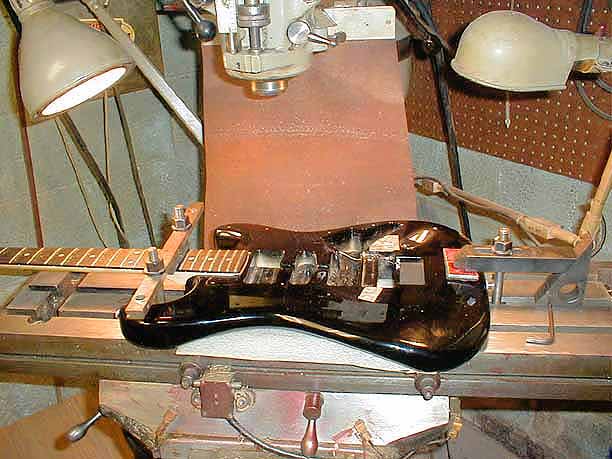
-
This is a Fender Floyd Rose Fat Strat, that had a repeated problem with
the wood giving out in front of the pivot post bushing. After the
second repair, the owner found us by searching the internet. The
pictures below show the result of the second repair as we found it.
|
-
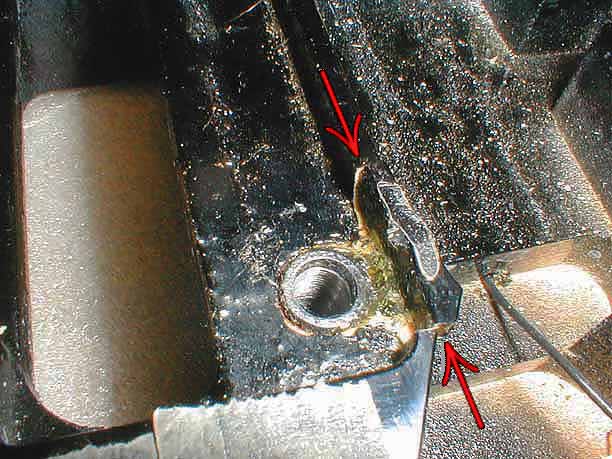
-
Here you can see the wood has given way, and the space filled in with
epoxy. Note the space behind the bushing. Already the
high strings were going flat from the bushing moving again.
|
-
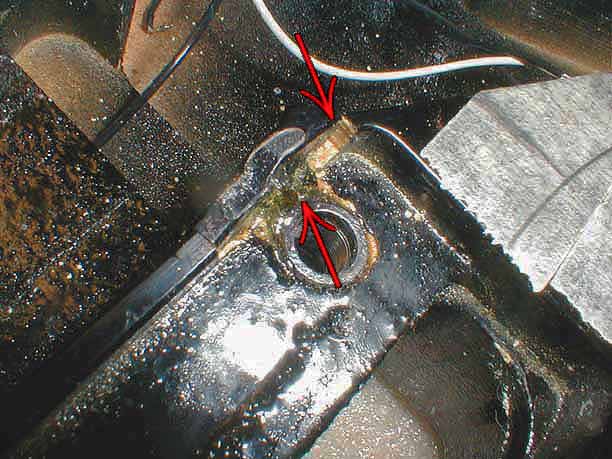
-
Below are pictures to show just how little wood Fender's
engineering has left behind to work with.
|
-
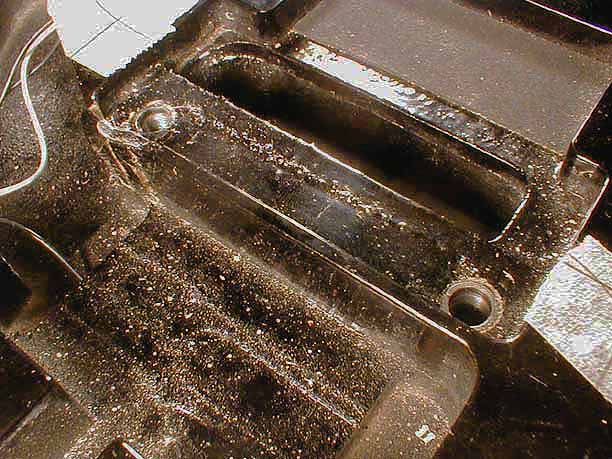
-
Here is another view showing the depth of the pickup route compared
to the recess route for the Floyd Rose to sit closer to the body.
Thus, locating the strings and the pickups at the stock (non
Floyd) strat height.
|
-

-
Here is another view showing the depth of the pickup route compared
to the recess route for the Floyd Rose to sit closer to the body.
Thus, locating the strings and the pickups at the stock (non
Floyd) strat height.
|
-
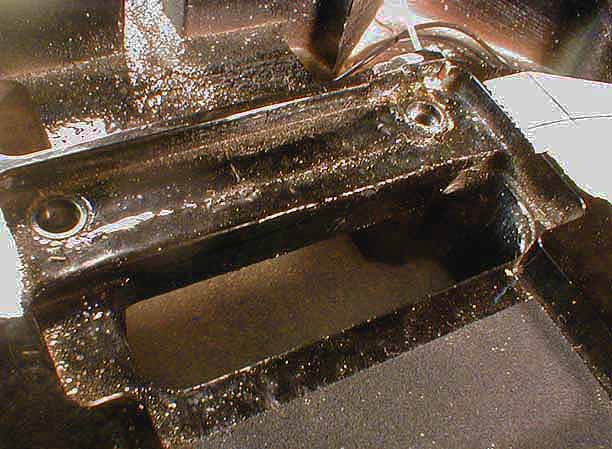
-
In this picture you can see the underside showing how much wood has
been removed in the spring compartment by the factory. This leaves
very little wood left to work with here. Not a very good thing.
|
-
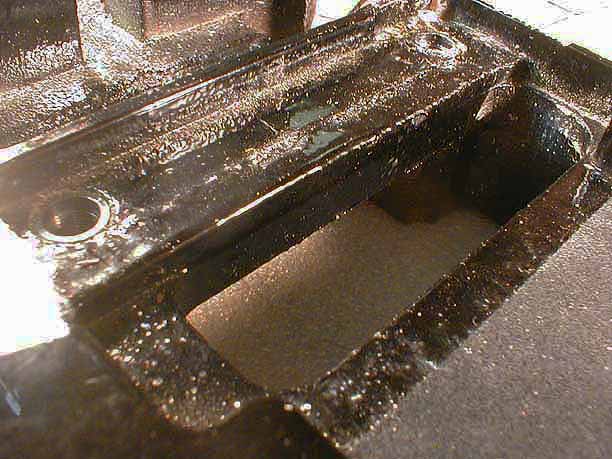
-
Just a closer look! By the way, that is white cushion foam that
you see on the bottom. It's used to protect the back of the body
of the guitar while being strapped on the Bridgeport.
|
-
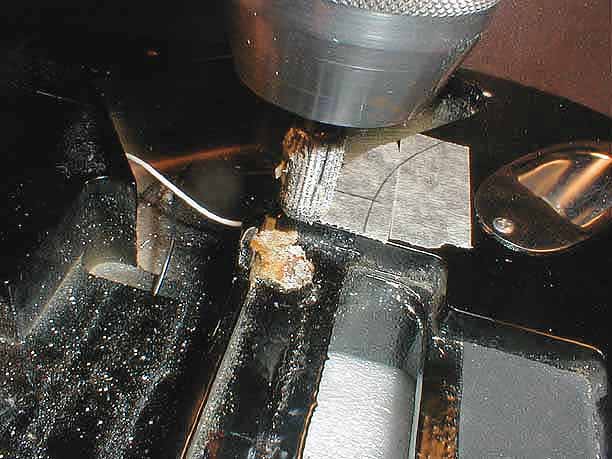
-
The first step is to pull the bushing to see if there is anything usable.
Here the first bushing comes out.
|
-
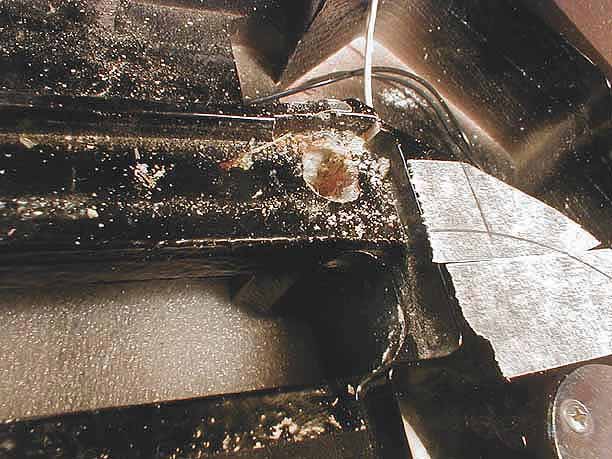
-
The remaining structure is not very good to depend on alone here.
|
-
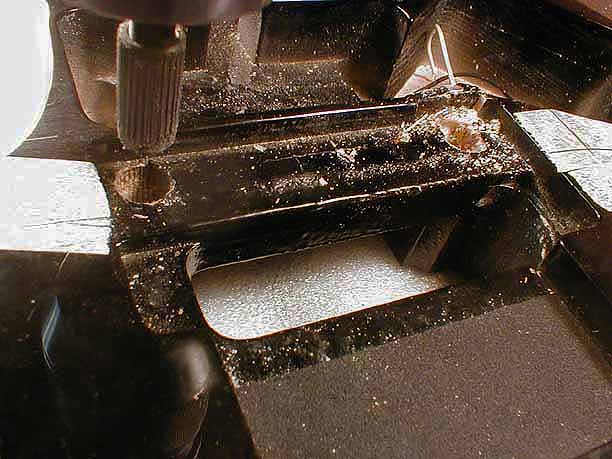
Here the second bushing is taken out and the structure is ok.
But it is not good enough to ensure the same problem can not happen on
this side too.
-
The answer to this problem is going to take some good old-fashioned
engineering.
|
-
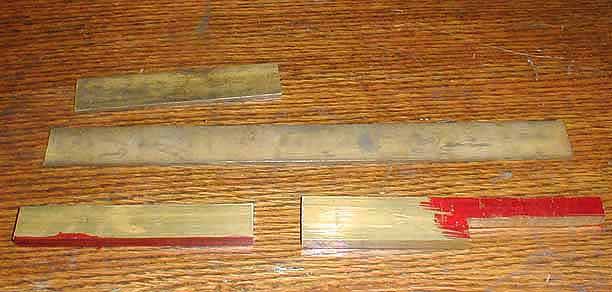
-
In light of the fact that so much wood had been removed by the factory
design from the guitar's body, and that the Floyd Rose is a light-weight
bridge, brass was the most practical material to give back to the body
a little mass with a nice appearance.
-
-
Here are the two pieces cut from standard brass bar stock.
|
-
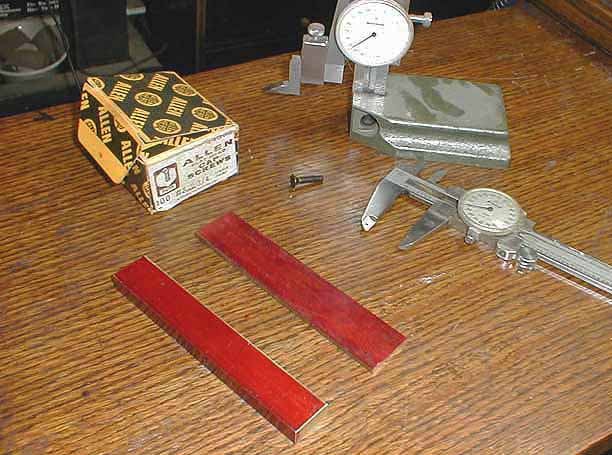
The idea is to build a solid bridge structure across the major void
created from the excessive wood removal for the tension spring cavity,
bridge cavity, and pickup cavities.
-
The limitations are that of the size and shape of the pickguard.
Everything had to be located out of sight under the pickguard. Appearances
count.
|
-
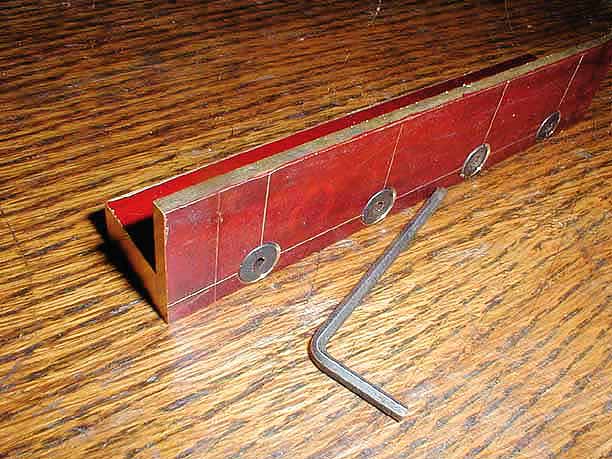
-
Here is the basic platform and supporting edge which is needed for the
pickguard. The basic layout has been transfered for hole locations,
clearance holes, and counter-sinked holes of the flat head screws.
Then the machining was performed.
|
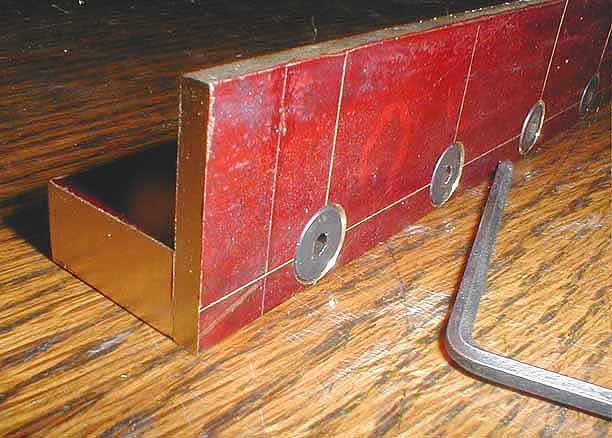 |
-

-
Here the two pieces are now one with some basic machining and the edges
broken.
|
-
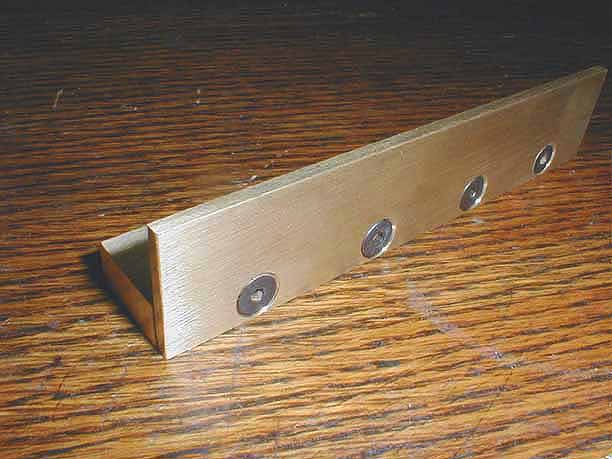
-
A view of the other side.
|
-
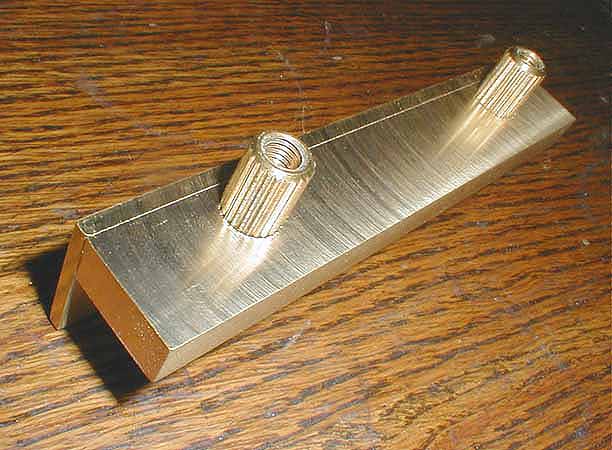
-
Here you see the new bushings installed into the new bridge support
structure.
|
-
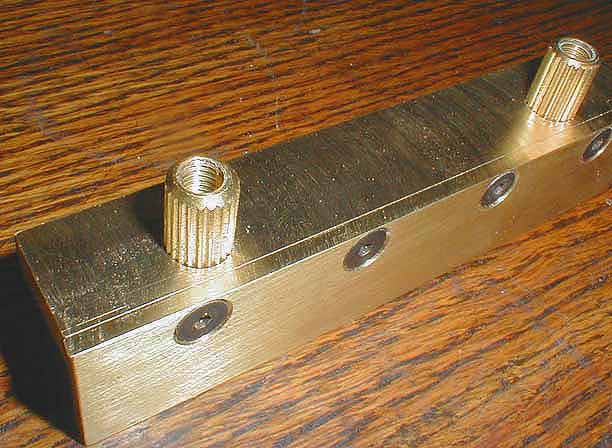
-
These bushing were pressed in so tight, the only way to get them out
is to machine them out. This guitar is not going have any bushings
moving if I can help it!
|
-
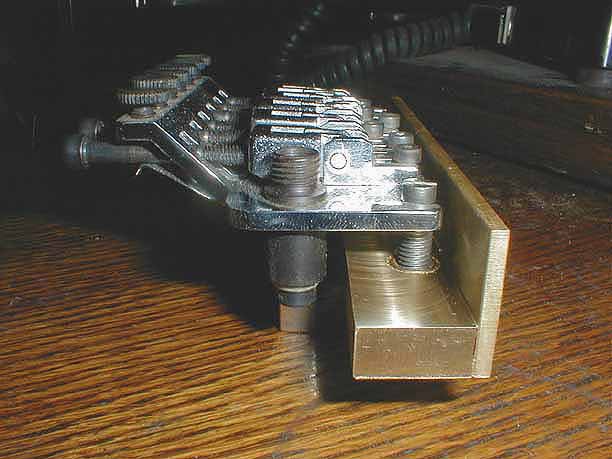
-
Now the parts are being checked for proper clearances to ensure the
bridge will give the proper travel without restriction.
|
-
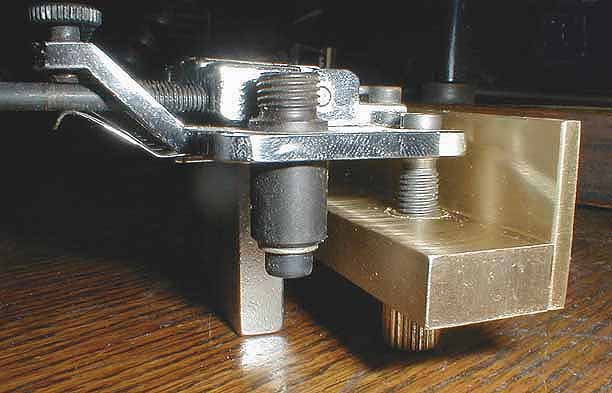
-
At this point the vertical lip is left higher than what is needed, which
will be machined cut later to fit the top surface of the body and support
the edge of the pickguard.
|
-
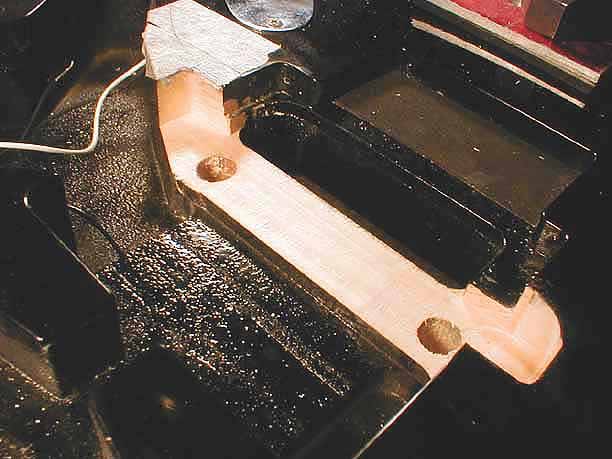
-
The guitar body has now been machined to receive the bridge. The
end contours have to be now transfered and machined into the ends of the
new support structure.
|
-
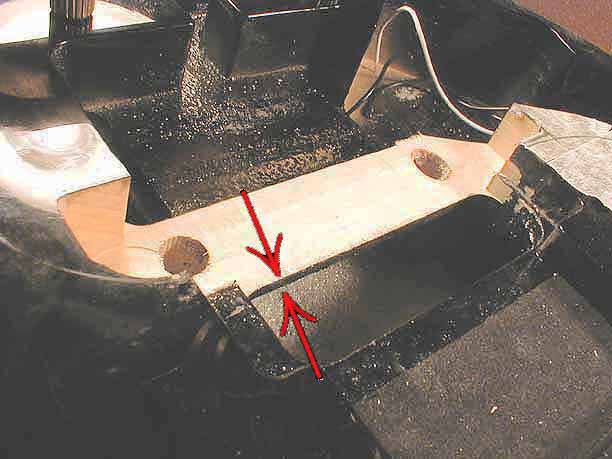
-
Now that the wood has been removed for the support structure, you can
see even more how little is really here by the original factory design.
|
-
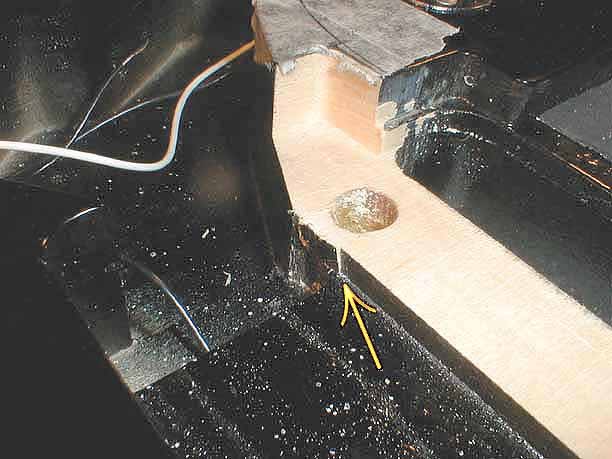
-
You can see now how deep down the wood has given way, all the way to
the bottom of the original machined pickup cavity. This was not a
good thing.
|
-
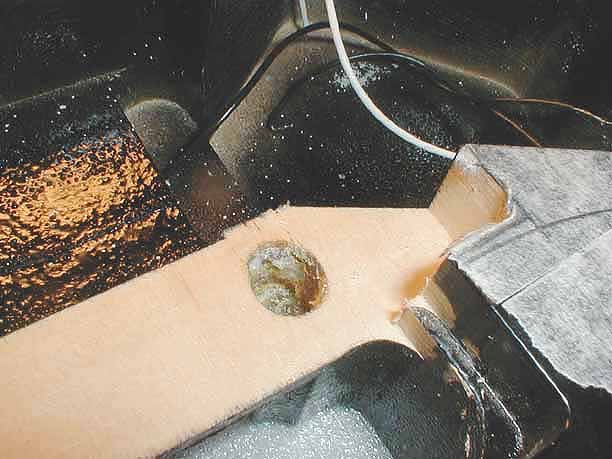
-
Another view from the other side for comparison.
|
-
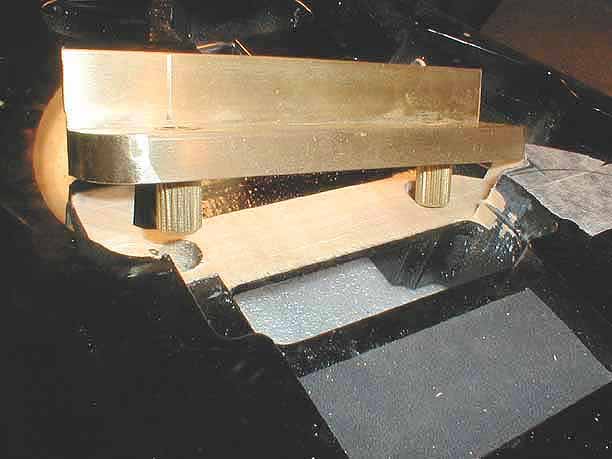
-
Now the contours have been machined at the ends of the new structure,
a test fit is done before it is glued, and pressed into the body for a
very tight permanent installation.
|
-
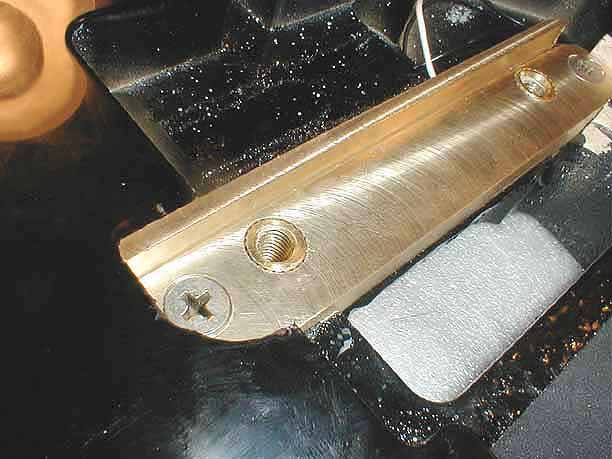
-
Now the new support structure has been pressed in with glue everywhere.
The bushings are glued into the existing holes along with the complete
bottom and sides.
|
-
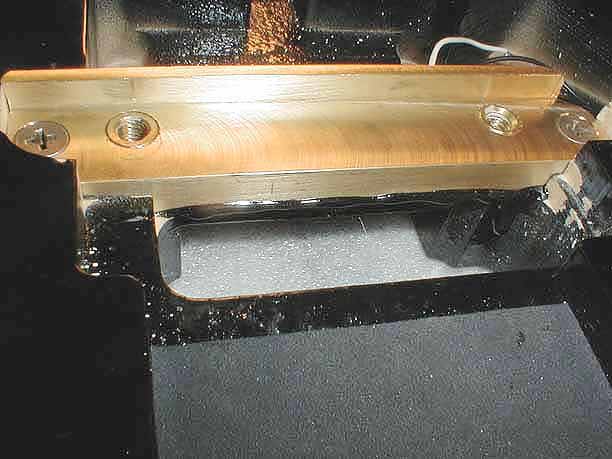
-
Extra long flat head screws were also installed with glue at both ends
for a better anchor to where the wood is the complete thickness of the
body.
|
-
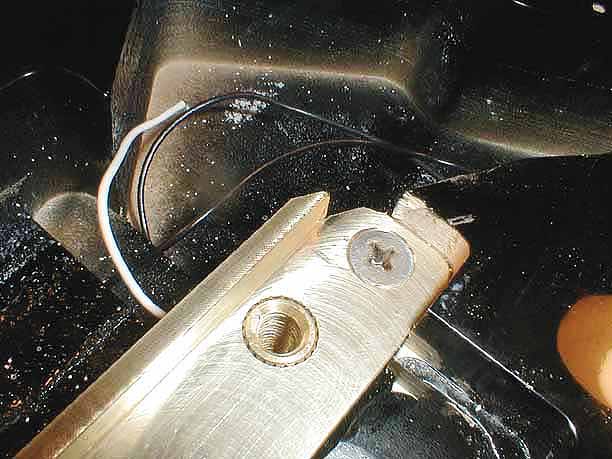
-
A closer look showing the support edge has been machined to the proper
height to meet the ends of the body, and match the alignment to support
the pickguard to its proper height.
|
-
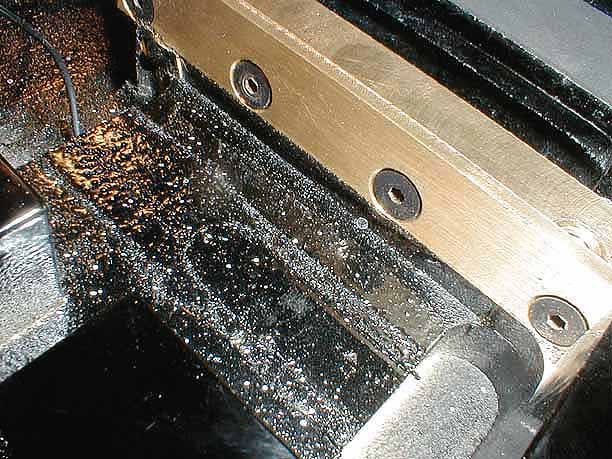
-
Another view of the installation.
|
-
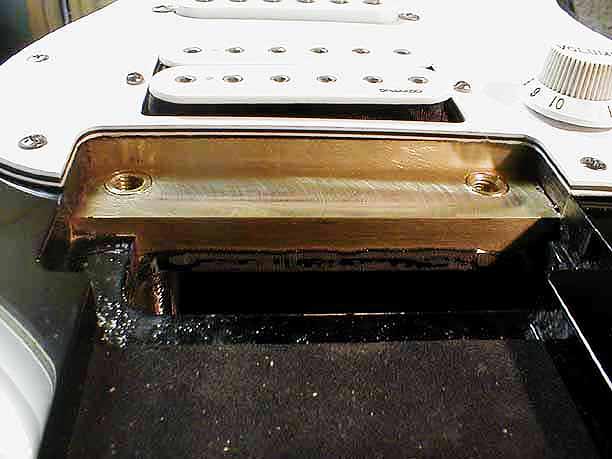
-
Hard wood end pieces have been fabricated, fitted, dyed black, glued
and pressed in over the top of the ends of the new support structure.
|
-
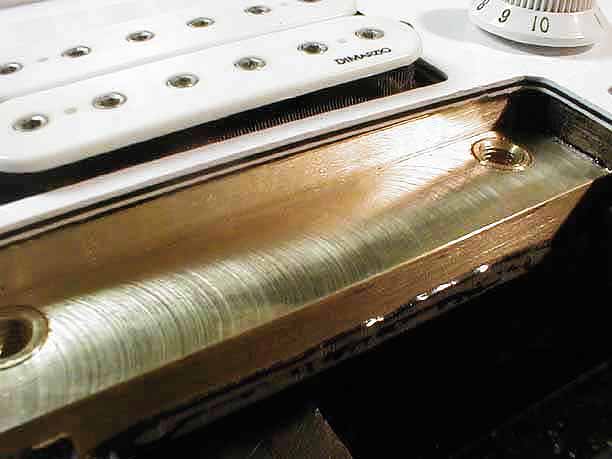
-
A close look at the pickguard line up with the support structure.
|
-
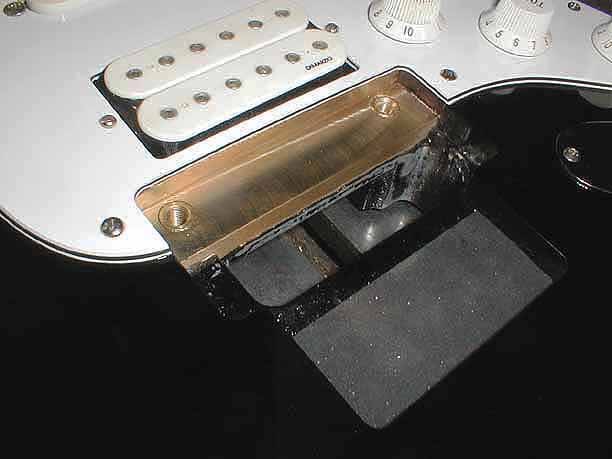
-
Everything is now wired back up together and all the screws are back
in the pickguard.
-
|
-
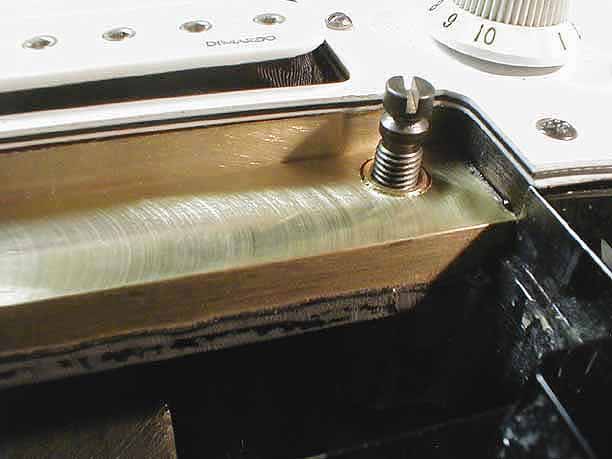
-
One final check to make sure the pivot screws are machined to the proper
adjustment height.
|
-
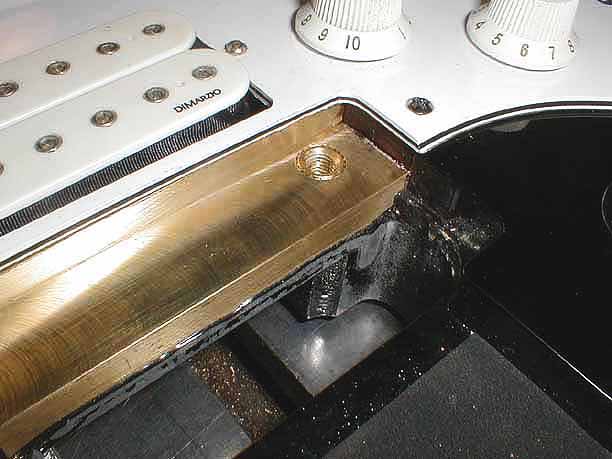
-
A little cleaning and polishing before the bridge is installed back
into the body.
|
-
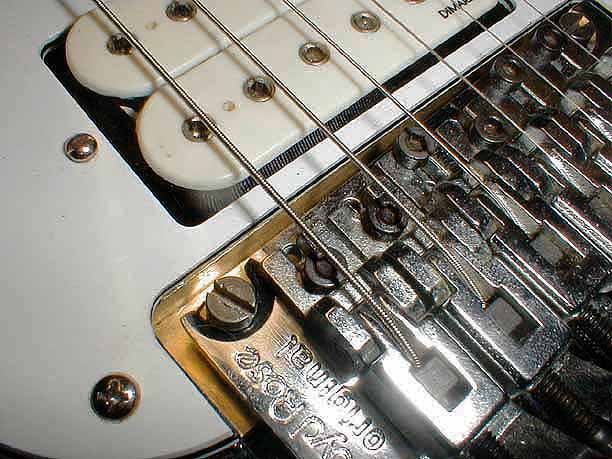
-
Strings installed, tuned to pitch, springs adjusted, and intonation
readjusted.
|
-
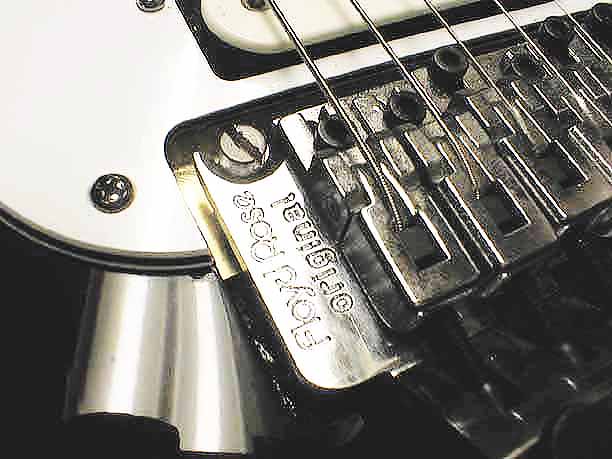
-
The repair is completed through a bit of old fashioned engineering.
This guitar picked up a bit of mass, which the owner says improved the
sound of this guitar a lot. I'll just have to take his word for it.
After all, it's his guitar for more years than I've had to get to know
it.
|
The repair is completed through a bit of old fashioned engineering.
This guitar picked up a bit of mass, which the owner says improved the
sound of this guitar a lot. I'll just have to take his word for it.
After all, it's his guitar for more years than I've had to get to know
it.
Subject: :)
Date: Sun,
16 Dec 2001 00:24:51 -0800 (PST)
From: doug
smith <poopiegeorge@yahoo.com>
To: richk@timeelect.com
Rich,
I just want
to thank you for the work you did on my
guitar.
It sounds better, stays in tune better, and I can also
feel that
the bridge WORKS better. My guitar has been
transformed
from a cheap mass-produced toy into a finely
tuned instrument.
I can't put a price on this thing now, it's too
good!
Thanks
Doug Smith
|


